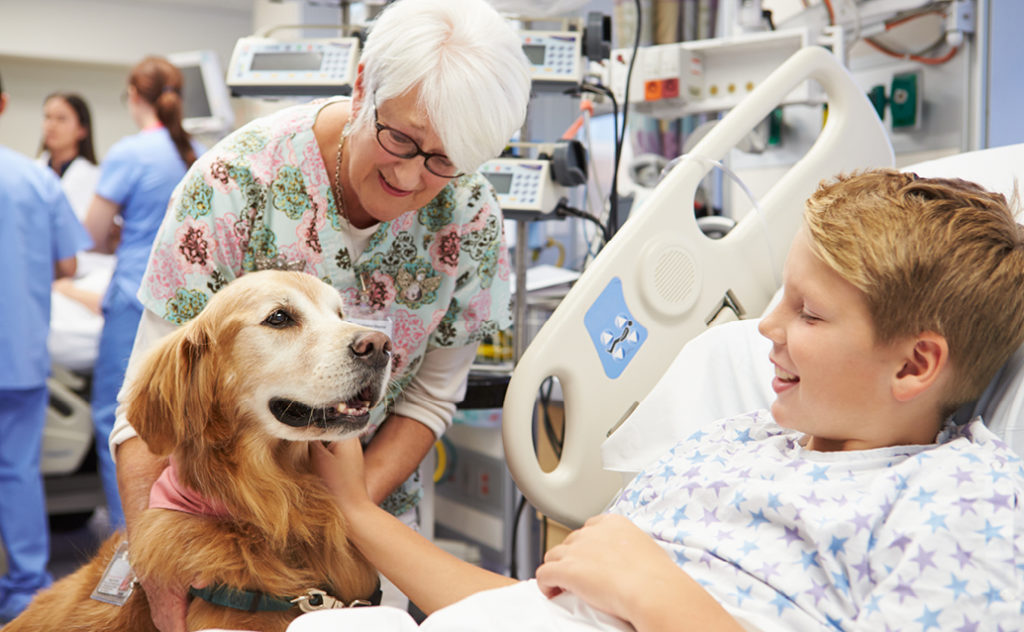
When we think of pet therapy, everyone has their own idea of what it is. Some may envision cute kittens surrounding a depressed mother. Others may see a man walking into a store with a parrot on his shoulder, saying, “You’re handsome.” Still others will think of a veteran on a plane with a pooch wearing a harness that reads, “Do not pet.” Did you picture one of these things or something close to it? Well, they are all right.
What is pet therapy?
Pet therapy is a guided interaction between a person and a trained animal. It also involves the animal’s handler. The purpose of pet therapy is to help someone recover from or cope with a health problem or mental disorder. This can take place in medical facilities such as hospitals and nursing homes/assisted living facilities, but also in private areas such as the home. Many animals are trained to provide therapy throughout a person’s day-to-day life.
Imagine you’re in the hospital and an assistance dog and its handler visit your room. They stay for 10 or 15 minutes. You’re invited to pet the dog and ask the handler questions. After the visit, you realize you’re smiling. And you feel a little less tired and a bit more optimistic.
Or picture yourself walking into an assisted living facility, where there is a bird cage with five parakeets inside. There are residents sitting around and looking at them with a smile on their face. These are examples of pet therapy and the effect it can have.
What are the benefits of pet therapy?
Elevating your mood has the benefit of reducing blood pressure, easing breathing and alleviating symptoms of depression. But pet therapy doesn’t stop at just being a mood booster. It can help improve motor skills, verbal communication, social skills, decrease boredom and is used often to reduce the amount of pharmaceuticals a person needs to take on a regular basis. This is why you may see animals in service to humans in a variety of settings. You may even find pets in children’s dental offices to help reduce the fear and anxiety children face.
I would urge all decision makers to investigate what pet therapy can do for your patients and practice. This benefit is not only for large practices or individuals with debilitating illness, but for all who want to better their patient’s experience and even their own lives. You can find out how to get started with implementing pet therapy and receive training and educational credits at Goodtherapy.org.
What are other ways to support your patient population? Expand your knowledge with American College of Education’s fully online nursing programs.

